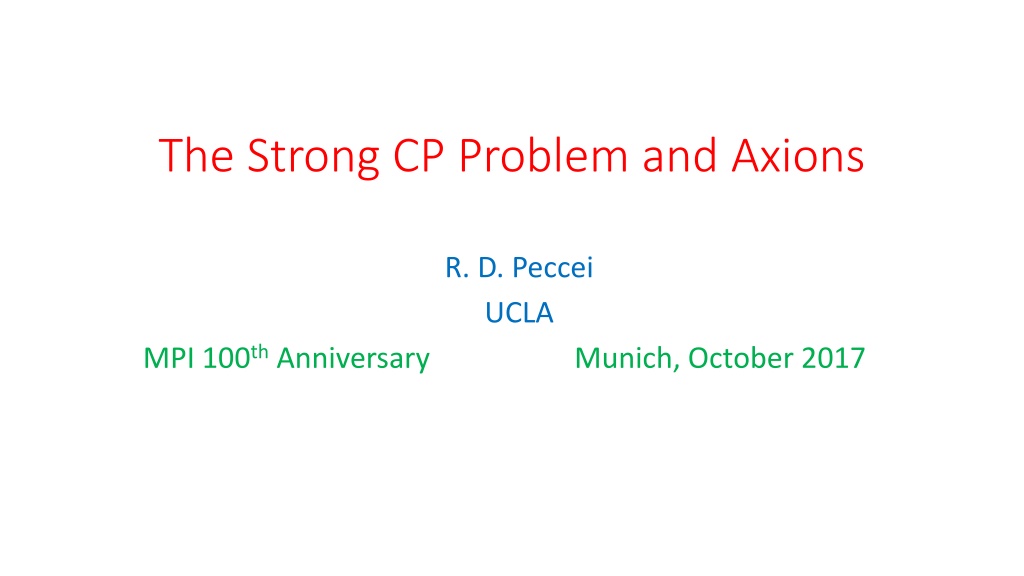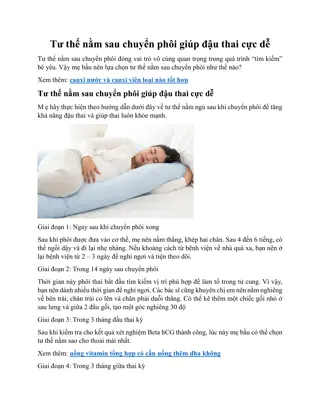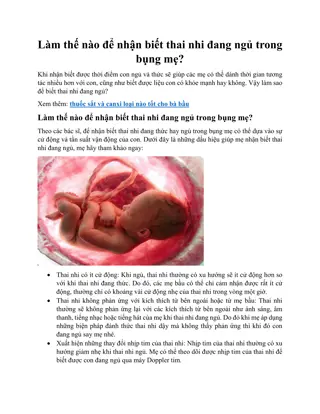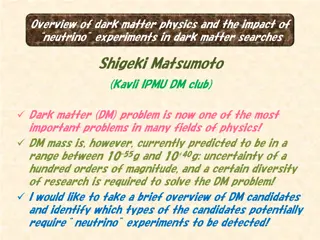The Strong CP Problem and Axions
In the realm of quantum chromodynamics, the strong CP problem and the role of axions are explored, shedding light on the U(1)A problem and its resolution. The content delves into the dynamics of quark condensates, Nambu-Goldstone bosons, and lattice QCD calculations unveiling the absence of U(1)A symmetry. Chiral Perturbation Theory is employed to analyze the breaking of this symmetry and its implications. Join us on a journey through the intriguing world of particle physics.
Download Presentation

Please find below an Image/Link to download the presentation.
The content on the website is provided AS IS for your information and personal use only. It may not be sold, licensed, or shared on other websites without obtaining consent from the author.If you encounter any issues during the download, it is possible that the publisher has removed the file from their server.
You are allowed to download the files provided on this website for personal or commercial use, subject to the condition that they are used lawfully. All files are the property of their respective owners.
The content on the website is provided AS IS for your information and personal use only. It may not be sold, licensed, or shared on other websites without obtaining consent from the author.
E N D
Presentation Transcript
The Strong CP Problem and Axions R. D. Peccei UCLA MPI 100thAnniversary Munich, October 2017
The Strong CP Problem and Axions The U(1)AProblem of QCD The t Hooft Solution The Strong CP Problem and its Resolution Axions and their Role in Cosmology Looking for Invisible Axions Experimentally Concluding Remarks
The U(1)AProblem of QCD In the 1970 s the strong interactions had a puzzling problem, which became particularly clear with the development of QCD. The QCD Lagrangian for N flavors LQCD = -1/4Fa Fa - f qf(-i D + mf) qf in the limit mf 0 has a large global symmetry: U(N)Vx U(N)A qf [e i aTa/2]ff qf ; qf [e i aTa 5/2]ff qf Vector Axial
Since mu, md << QCD, for these quarks the mf 0 limit is sensible. Thus one expect strong interactions to be approximately U(2)Vx U(2)A invariant. Indeed, one knows experimentallythat U(2)V = SU(2)V x U(1)V Isospin x Baryon # is a good approximate symmetry of nature (p, n) and ( , ) multiplets in spectrum For axial symmetries, however, things are different. Dynamically, quark condensates form and break U(2)A down spontaneously and, as a result, there are no mixed parity multiplets = u u d d 0
However, because U(2)A is a spontaneously broken symmetry, one expects now the appearance in the spectrum of approximate Nambu-Goldstone bosons, with m 0 [ m 0 as mu, md 0 ] For U(2)A one expects 4 such bosons ( , ). Although pions are light, m 0, there is no sign of another light state in the hadronic spectrum, since m2 >> m2 . Weinberg dubbed this the U(1)A problem and suggested that, somehow, there was no U(1)A symmetry in the strong interactions
That there is no U(1)A symmetry emerges explicitly in lattice QCD calculations, which show that indeed, as m 0, m constant
It is useful to describe the U(1)A problem in the language of Chiral Perturbation Theory, which describes the QCD dynamics for the ( , )- sector Beyond the breaking term induced by the quark mass terms, the effective Chiral Lagrangian for this theory needs to be augmented by an additional term which breaks explicitly U(1)A, Defining = exp i/F [ a a + ] and including a symmetry breaking pion mass m2 ~ (mu+ md) one has: Leff = F2 Tr + F2 m2 Tr ( + ) - M2o 2 Provided M2o >> m2 this allows m2 >> m2 , but what is the origin of this last term?
The t Hooft Solution The resolution of the U(1)A problem is due to t Hooft who realized the crucial dynamical role played by the gluon pseudoscalar density Q = Even though in the massless quark limit U(1)A is an apparent symmetry of the QCD Lagrangian, the current J 5 associated with the U(1)A symmetry is anomalous [Adler Bell Jackiw] where N is the number of massless quarks 2 g ~ aF F a 2 32 2 g 32 N ~ 5= = a F F J = N Q a 2
Since Q enters in the anomaly equation, if it is dynamically important the U(1)A problem should be resolved, because then there is really no conserved U(1)A current This can be checked by explicitly including Q in the Chiral Lagrangian describing the low energy behavior of QCD [Di Vecchia Veneziano] Taking into account the anomaly in the UA(1) current and keeping terms up to O(Q2) one has: Leff = F2 Tr + F2 m2 Tr ( + ) + i Q Tr [ln -ln ] + [1/ F2 M2o] Q2+ In this Lagrangian, Q is essentially a background field and can be eliminated through its equation of motion: Q = -i/4 [F2 M2o] Tr [ln -ln ] = [F M2o] +...
Using this result for Q, the last two terms in Leff reduce to: i Q Tr [ln -ln ] + [1/ F2 M2o] Q2 - M2o 2 providing an effective gluonic mass term for the meson, and thus resolving the UA(1) problem Although one can see directly from the Chiral Lagrangian how the dynamical role of Q removes an apparent Nambu Goldstone boson (the ) from the spectrum, this follows also directly from QCD It can be traced to the non trivial properties of the QCD vacuum which involve a new dimensionless parameter the vacuum angle [ t Hooft] I ll sketch below the principal points
Because the integral of Q is a topological invariant: = d4x Q = with = 0, 1, 2, , all transition amplitudes in QCD contain sums over distinct sectors characterized by the winding number . The contributions of the 0 sectors break the U(1)A symmetry Furthermore, one can show that gauge invariance introduces a parameter associated with the sum over the distinct sectors in the QCD transition amplitudes [e i is Bloch phase] A = e i A The parameter can be connected with the structure of the QCD vacuum and its presence gives an additional contribution to the QCD Lagrangian 2 g ~ aF F a 2 32
This can be seen as follows. In the case of QCD, by having to sum over the distinct sectors, the usual path-integral representation for the vacuum-vacuum transition amplitude is modified to read: +<vac|vac>- = e i A e iS[A] ( - ) 2 g ~ aF F a 2 32 Denoting the QCD vacuum as | >, one can re-interpret the term in the sum over as an addition to the usual QCD action That is: ( | 2 g ~ F [ ] iS A a = 4 ) Ae d xF eff + a 2 32 where 2 g ~ a = + 4 S S d xF a F eff QCD 2 32
The Strong CP Problem and its Resolution The resolution of the U(1)A problem, however, engenders another problem: the strong CP problem As we have seen, effectively the QCD vacuum structure adds and extra term to LQCD a F 32 2 g ~ = L F a 2 This term conserves C but violates P and T, and thus it also violates CP This is problematic, as there is no evidence of CP violation in the strong interactions!
In fact, the term produces an electric dipole moment for the neutron of order: dn e mq/Mn2 10-16 ecm The strong experimental bound dn< 2.9 x 10-26 ecm requires the angle to be very small < 10-9 -10-10 [ Baluni; Crewther Di Vecchia Veneziano Witten]. Why should be this small is the strong CP problem Problem is actually worse if one considers the effect of chiral transformations on the -vacuum Because of the chiral anomaly, these transformations change the -vacuum [Jackiw Rebbi ]: ei Q5 | > = | + >
If besides QCD one includes the weak interactions, in general the quark mass matrix is non-diagonal and complex LMass = - qiR Mij qjL + h. c. To diagonalize M one must, among other things, perform a chiral transformation by an angle of Arg det M which, because of the Jackiw Rebbi result, changes into total = + Arg det M Thus, in full generality, the strong CP problem can be stated as follows: why is the angle total , coming from the strong and weak interactions, so small?
There are only three known classes of solutions to the strong CP problem: Anthropically total is small CP is broken spontaneously and the induced total is small iii. A chiral symmetry drives total 0 I will make no comments on i Although ii. is interesting, the models which lead to total 10 -10 are rather complex and often are at odds with the CKM paradigm and/or cosmology In my opinion, only iii. is a viable solution, although it necessitates introducing a new global, spontaneously broken, chiral symmetry i. ii.
In principle, of course, this additional chiral symmetry could be intrinsic to QCD if the u-quark had no mass, mu = 0 [Kaplan Manohar]. However, calculations on the lattice exclude the mu = 0 solution MILC Collaboration rules out mu=0 at 10 Leutwyler
Helen Quinn and I proposed the first prototype chiral solution [40 years ago!] suggesting that the SM had an additional U(1)chiral symmetry (now called U(1)PQ) which drives total 0 Recently a number of variant chiral solutions have been proposed: - Hook and independently Fukuda Harigaya Ibe Yanagida use a Z2 symmetry which takes SM <-> SM and an anomalous U(1) symmetry to drive total 0 - Ahn uses a flavored version of U(1)PQ [A4 x U(1)PQ ] to accomplish the same - Kawasaki Yamada Yanagida use instead [SU(3)x U(1)PQ ] as a group These are all very natural solutions to the strong CP problem, since chirality effectively rotates the -vacua away: e-i Q5 | > = | 0 >
Axions and their Role in Cosmology I ll focus here on the simplest chiral solution Introducing a global U(1)PQ symmetry, which is necessarily spontaneously broken, replaces: Static CP Viol. Angle Dynamical CP conserving Axion field and, effectively, eliminates CP violation in the strong sector 32 a f 32 a(x) / fa 2 a g ~ 2 g ~ a = L F a F = a L F F a 2 a 2 Here fa is the scale of the breaking of the U(1)PQ symmetry , while a(x) is the Nambu Goldstone axion field associated with the broken symmetry [ Weinberg Wilczek]
The property and interactions of axions depend on fa the scale of the breaking of the U(1)PQ symmetry In particular, the axion mass, its coupling to two photons and its isoscalar and isovector couplings are inversely proportional to fa ma = m mast [vF / fa] ; a = 0 [f / fa] ; a = 3 [f / fa] Here vF =( 2 GF)-1/2 250 GeV f = 92 MeV ; and m ; Ka ; 0 ; 3 are parameters of O(1) In the above, the axion mass mast isthe second derivative of the axion effective potential generated by QCD [ mast]2 = 2 V / 2 a = [1/ fa]2 (0) where the topological susceptibility (0) is given by (0) = d4x <Q(x) Q(0)> a ~ 4 phys = L K F F a a f a
The value of the topological susceptibility can be estimated on the lattice, or through chiral perturbation theory Weinberg In particular, in chiral perturbation theory one finds for fa = vF =( 2 GF)-1/2 250 GeV [ mast]2 = m 2 [ f / vF]2 [(mu md) / (mu + md )2 ] (25 KeV)2 It was natural for Helen Quinn and me to take fa= vF the scale of electroweak symmetry breaking. However, electroweak scale axions are ruled out by experiment. For example, one predicts BR(K+ + + a) > 1.2 x 10 -4 [Bardeen Peccei Yanagida] well above the bound obtained at KEK BR(K+ + +nothing) < 3.8 x 10 -8
The choice fa = vF is not necessary to solve the strong CP problem If fa >> vF then the axion is very light, very weakly coupled and very long lived and such invisible axion models remain viable These models introduce fields which carry PQ charge but are SU(2)XU(1) singlets . Two different generic models exist: i) DFSZ Models [Dine Fischler Srednicki; Zhitnisky] These models add to the PQ model a scalar field which carries PQ charge and fa= < > >> vF ii) KSVZ Models [Kim; Shifman Vainshtein Zakharov] Only a superheavy quark Q and a scalar field carry PQ charge. The dynamics is such that fa= < > >> vF and MQ fa
For both the KSVZ and the DFSZ models m=1, hence: ma = mast [vF / fa] [106 GeV / fa] 5.7 eV The KSVZ and DFSZ axions are very light, very weakly coupled and very long-lived, but are not totally invisible Upper bounds on ma can be inferred from astrophysics since axion emission, through Primakoff and other processes, causes energy loss 1/fa affecting stellar evolution. Typically these astrophysical bounds, which I will not discuss in detail here, allow axions lighter than ma 1-10-3 eV Raffelt et al
Rather remarkably, cosmology gives a lower bound for the axion mass (upper bound on fa ) [Preskill Wise Wilczek; Abbott Sikivie; Dine Fischler] and axions can have a significant cosmological role Physics is simple to understand. When Universe goes through the U(1)PQ phase transition at T fa >> QCD the QCD anomaly is ineffective and is arbitrary. Eventually, when Universe cools to T QCD the axion gets a mass and 0. The coherent pa=0 axion oscillations towards this minimum contribute to the Universe s energy density and act as cold dark matter The detailed results depend on whether the PQ phase transition occurs before or after inflation and I ll sketch the main issues in both cases
The equation of motion for the axion field: 2 a / 2 t + 3H(t) a/ t = - V( a )/ a gives the evolution of the axion field in the Universe, whereH(t) is the expansion rate of the Universe with H(t) ~ 1/t ~ T2 /MP In a suitable approximation, the axion potential can be taken as V(a) = (T) [ 1 cos (a / fa ) ] where the susceptibility (T) can be calculated in QCD [Figure]and gives a temperature dependent axion massma (T) = [ (T)] 1/2 / fa whichdrops rapidly with temperature At temperatures of O (T fa ) the axion field takes an initial value a = fa i and remains at that value until ma (T) H(T), which occurs at temperatures of order a GeV, when it starts oscillating about the minimum of the potential The energy density of these oscillations could account for the Universe s energy density in cold dark matter
Borsanyi et al Slope of (T) same as that of DIGA, but normalization differs
The first case to consider is having the PQ phase transition happens before (or during) inflation During inflation the axion field is homogenized over enormous distances. Thus only the evolution of the pa=0 mode is relevant A recent calculation of the axion contribution to Universe s energy density [Ballesteros et al] then gives ah2 = 0.176 0.029 [fa/1012 GeV]1.17 [ i2] where i is the initial misalignment angle This quantity is bounded by the density of Cold Dark Matter in the Universe: CDMh2 = 0.120 0.003 WMAP Planck If one assumes that axions are the dark matter in the Universe, this then gives a relation between i and fa : i= 0.83 0.06[1012 GeV/ fa]0.585
The table below gives some typical values for i and fa i fa (GeV) 1012 i 0.83 1015 1018 1.8 x 10-2 3.1 x 10-4 fa i (GeV) 8.3 x 1011 1.8 x 1013 3.1 x 1014 The axion mass follows from the relation ma and for pre-inflationary axions is not fixed since the initial misalignment angle i is not These results for fa i give an interesting bound, suggested long ago by Lyth, which originates because inflation induces measurable quantum fluctuations in the axion field Let me discuss briefly this bound = 5.7 [10 6 GeV / f a] eV
Axions engender, so called, isocurvature axion perturbations which correspond to fluctuations in the initial misalignment angle i These fluctuations have a power spectrum given by: 2a(k) = [2 | i|/ i ]2 = [HI / i fa ]2 where HI is the Universe s expansion rate during inflation Both WMAP and Planck have put bounds on the ratio: iso = 2a(k) /( 2R(k) + 2a(k) ) where 2R(k) measures the curvature perturbation spectrum. At k= 0.002 Mpc-1 these collaborations find: iso< 0.036 (95% CL) Planck iso< 0.047 (95% CL) WMAP This bound on iso implies a bound on the isocurvature axion perturbations at k= 0.002 Mpc-1
Using the best fit result of Planck for 2R(k) : 2R(k) =2.2 x 10 -9 (k/ 0.05 Mpc -1) -0.04 the bound on iso implies 2a(k ) < 9.25 x 10 -11 Hence the fluctuation in the initial misalignment angle is very small: | i |/ i < 4.8 x 10 -6 and there is a strong bound on the expansion rate during inflation: HI < 3 x 10 -5 i fa For a sensible range of PQ scales [10 12 GeV < fa < 10 18 GeV] this Lyth bound on HI ranges from 2.4 x 10 7 GeV to 9.3 x 10 9 GeV . Taking this bound at face value, makes only low energy scale inflation models tenable. Conversely, if one could establish HI is large, then pre- inflationary axions are ruled out
Let us now consider the other possibility, when the PQ phase transition happens after inflation Because the PQ phase transition occurred after inflation, no isocurvature fluctuations ensue in this case However, as emphasized originally by Sikivie, in this case other dynamical issues arise due to the formation of axionic strings and domain walls, which are not erased by inflation At T fa U(1)PQ gets spontaneously broken, and one-dimensional defects: axionic strings, around which = a/fa winds by 2 , are formed These axionic strings have an energy per unit length fa2 ln L fa, where L is the inter-string separation. These strings decay very efficiently into axions up to temperatures T QCD
When T QCD U(1)PQ is explicitly broken by the gluon anomaly. However, since under a PQ transformation + 2 Nfl (where Nfl is the number of quarks carrying U(1)PQ ) a Z(Nfl) discrete symmetry is preserved Because of this Z(Nfl) symmetry there are Nfl degenerate vacuum states for the axion field. As a result, neighboring regions in the Universe which are in different axion vacua are separated by domain walls. At T QCD , since winds by 2 as one goes around an axionic string, the axion field passes through each minimum. As a resulteach axionic string becomes the edge to Nfl domain walls, and the process of axion radiation stops
If Nfl. > 1 (like in the DFSZ model) this string-wall network is stable and has a sizable surface energy density ma fa2 6.3 x 109 GeV3 [fa /1012 GeV] This is a real problem, since the energy density in these walls dissipates slowly as the Universe expands [Zeldovich Kobzarev Okun] wall = T and wall now would vastly exceed the closure density of the Universe This disaster is avoided if Nfl =1. Even though there is a unique vacuum, domain walls still form and attach to an axionic string one wall per string. However, as Everett and Vilenkin showed, these walls very rapidly get chopped up into pieces, each enclosed by strings. These structures are unstable and disappear by radiating axions
It follows that, if the PQ symmetry breaks after inflation, the Universe contains many patches which have different initial angles In this case the coherent pa=0 axion oscillations towards the minimum will give a contribution to the Universe s energy density corresponding to an average initial angle i2= < 2>= 2/3 Whence one expects ah2=0.176 0.029 [fa/1012 GeV]1.17< 2> = 0.579 0.095[fa/1012 GeV]1.17 Equating this to the Universe s cold dark matter density CDMh2 = 0.12 gives fa = [1.77 0.25] x 10 11 GeV which gives an axion mass in the range 28 eV < ma < 36 eV However, axions radiated by the axionic strings also contribute to i.
There has been an ongoing controversy on how much the axions radiated by these Nfl =1 walls, as well as by axionic strings, contribute to the Universe s energy density Gondolo and Visinelli gives the following range for the ratio of the contributions to the energy density of string/wall decay compared to that for pa=0 oscillations : 0.16 [Sikivie et al] < = str/wall / p=0 < 186 [Battye Shellard] Using the recent estimate of Hiramatsu et al = 19 10 gives ma = (32 4)x 10-6 eV) (1 + ).884 = (32 4) x 10-6 eV (20 10 ).884 pushing ma quite close to the astrophysical upper bound! A recent estimate of Ballesteros et al gives a narrower range 50 eV < ma < 200 eV
Looking for Invisible Axions There are many searches underway for invisible axions and I ll conclude by briefly discussing some of these experiments A number of experiments use Sikivie s idea of converting axions into photons by using a B-field in a resonant cavity The key coupling ga is inversely proportional to fa = ga a E . B The longest running experiment is ADMX which started at LLNL over a decade ago, but now has moved to the Univ. Washington It probes the parameter space that would allow invisible axions to be the dark matter in the Universe a ~ 4 phys = L K F F a a f a
Schematically ADMX looks like the Figure below, a large volume cavity in a strong magnetic field For ma 10 eV the photon frequency which ADMX must detect is in the GHz range The ADMX experiment so far has explored the axion mass range 1.9 eV < ma < 3.3 eV at an appropriate strength ga for axions to be the dark matter in the Univers
A second generation experiment ADMX Gen2 is now running hoping to search for axions with mass up to ma = 40 eV
Another Haloscope has reported results recently, for larger axion masses 23.5 eV < ma < 24 eV, but not quite at the strength needed to detect KSVZ axions Brubaker et al
Currently a large effort is underway in Korea in the Center for Axion and Precision Physics Research (CAPP) to mount a series of experiments to detect dark matter axions Figure shows area in ga - ma plane expected to be accessible
Haloscopes based on cavity resonators have difficulty probing axion masses above ma 40 eV because the strength of the signal is proportional to the volume of the cavity V and V ~ 1/ 3 ~ 1/ma 3 This limitation is bypassed by dielectric haloscopes, such as those proposed by the MADMAX experiment, consisting of a series of parallel dielectric disks with a mirror on one side, all within a B field parallel to the disks Schematically A A. Caldwell et al
Theory of dielectric haloscopes fully developed in paper by Millar, Raffelt, Redondo, and Steffen When an interface between different dielectric media is inside a B field an oscillating axion field acts as a source of electromagnetic waves The emission rate of these waves can be boosted by constructive interference, by judiciously placing multiple dielectric layers As the Figure shows this technique can potentially search the high frequency range of 10- 100 GHz, corresponding to axion masses in the range 40 eV < ma < 400 eV
It is possible that the PQ symmetry breaking occurred before inflation and the misalignment angle is i<< 1. In this case, dark matter axions are associated with larger scales of U(1)PQ breaking [e.g. if i = 1.8 x 10 -2 then fa = 1015 GeV] and the axions are superlight [ma = 5.7 x 10 -9 eV for this example] In many ways PQ breaking scales fa (1015- 1018) GeV are very natural, since axions are ubiquitous in string theories [Svrcek Witten] Remarkably, one might be able to detect such high PQ breaking scales and superlight dark matter axions [Graham and Rajendran]
Idea of Graham and Rajendran is very nice. Recall that the QCD angle gave a neutron electric dipole moment dn e mq/Mn2 If there is U(1)PQ symmetry, is replaced by the axion field: a(x)/fa So in invisible axion models there is a dynamical oscillatory neutron edm: dn e mq/Mn2 a(t)/fa = e mq/Mn2 [a/fa] cos mat However, if axions are the dark matter in the Universe, the ratio [a/fa] is fixed since: DM 0. 3 ??? which gives [a/fa] 5.4 x 10 -20 ??3 = 1 2m2aa2 = [4.4 x 10-3 GeV 2] 2[a/fa]2
Upshot is that, if axions are the dark matter, the amplitude of dn is fixed and one predicts: dn = (4 x 10 -35 cos mat ) e cm Only unknown is the oscillation frequency which depends on the axion mass ma (or fa): ?? ?? However, this tiny edm might be measurable because it is oscillatory - Graham Rajendran suggest using energy shifts in cold molecules to detect this effect - Budker Graham Ledbetter Rajendran Sushkov suggest looking for precession of nuclear spins in a material in the presence of a background magnetic field to measure the oscillating edm ?? ?? ma 1 kHz 1 MHz
Figure shows the estimated reach of the proposed Budker et al experiment [CASPER] ma < 10-9 eV fa > 6 x 1015 GeV
A different, but similar, idea for detecting DM axions has been suggested by Sikivie Sullivan Tanner In the presence of a strong external B-field, Bext,DM axions can induce a small B field, Ba, which can be detected after amplification by an LC circuit Axion induced B field Strength of Ba is measure of fa, since 2 ( t a)2 = DM B K a = x B a a ext t f a 1 Sensitivity of proposed experiment (a, b, c different magnets)
Concluding Remarks The existence of an additional chiral symmetry- like U(1) PQ -remains the most compelling solution to the strong CP problem The concomitant axions play an interesting cosmological role and arise naturally in theories beyond the Standard Model There are both ongoing and proposed experiments which in the next decade or so should tell us if axions exist























